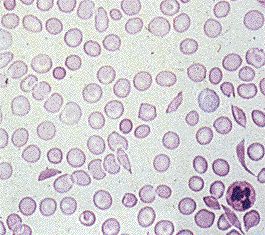The theory of natural selection (part 2) - Why does sickle cell anemia persist at high frequencies?

Sickle cell anemia
Sickle cell anemia is a nearly lethal condition in humans, responsible for about 100 000 deaths a year. About 80% of individuals with this condition die before reproducing. Yet despite such apparently strong selection against the gene responsible for sickle cell hemoglobin, it is maintained at frequencies of 10% or even more in some human populations.
Why is this?
The answer was first suggested by Haldane. Sickle cell anemia is caused by a genetic variant of a-hemoglobin. If we symbolize the normal hemoglobin allele by A and the sickle cell hemoglobin by S , then people who suffer from sickle cell anemia are SS . Haldane compared a map of the incidence of malaria with a map of the gene frequency: they are strikingly similar. Perhaps hemoglobin S provides some advantage in malarial zones.
It turned out that, although SS is almost lethal, the heterozygote AS is more resistant to malaria than the homozygote AA . AS red blood cells are more difficult for the malarial parasite Plasmodium falciparum to colonize. Therefore, where the malarial parasite is common, AS humans survive better than AA , which suffer from malaria.
The next screen shows a map indicating frequencies of gene for sickle cell hemoglobin in Africa, southern Asia and Europe. The frequencies match the incidence of malaria, which is also shown.
| Next |



